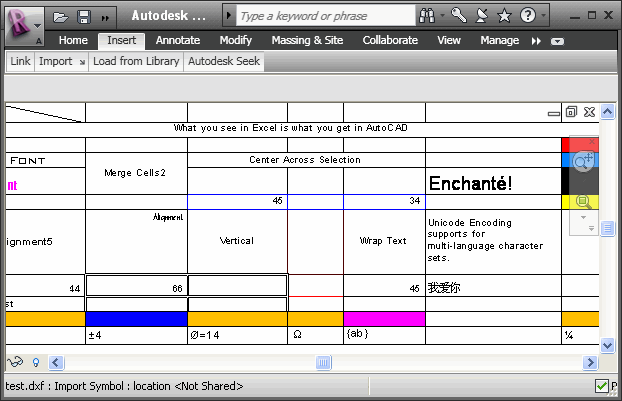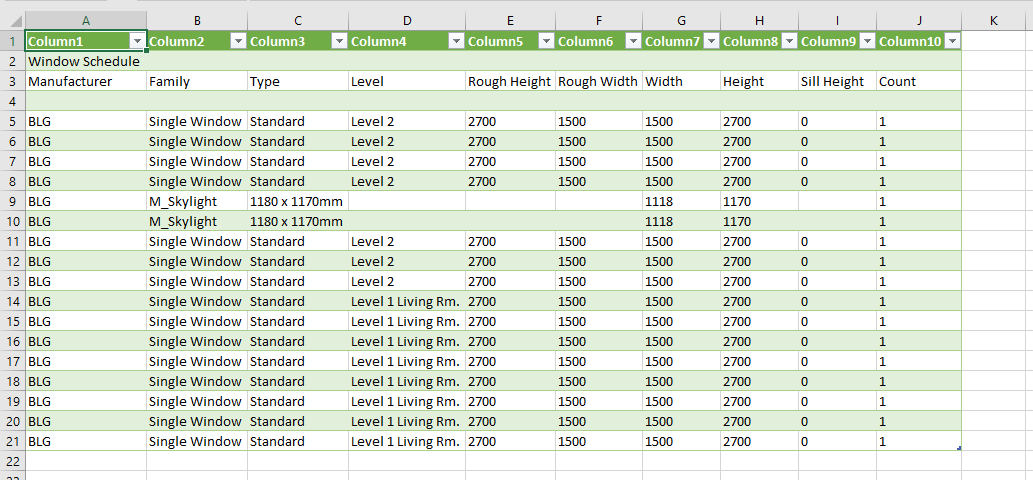Import Excel into Revit: Streamlining Your Operations
Wiki Article
Revit Accelerator: Excel Combination Approaches for Enhancing Performance and Cooperation
In this write-up, we will certainly check out the advantages of integrating Excel into your Revit workflows. Plus, we will certainly share finest techniques for effortlessly integrating Excel into your Revit jobs. Obtain ready to supercharge your Revit experience with our Revit Accelerator: Excel Integration Methods!Advantages of Excel Combination in Revit
The advantages of Excel combination in Revit are many and can substantially improve performance and partnership. By seamlessly attaching these 2 effective devices, you can enhance your operations and conserve useful time. With Excel combination, you can quickly import and export data between Revit and Excel, enabling you to take advantage of the staminas of both programs.
One more advantage of Excel integration is the ability to develop vibrant timetables and reports. By connecting your Revit version to an Excel spreadsheet, any type of changes made in Revit will immediately upgrade in the matching Excel documents. This makes it very easy to create up-to-date schedules, amount departures, and other project paperwork.
Excel integration in Revit additionally makes it possible for better cooperation among employee. With the capacity to import and export data, you can conveniently share information with colleagues that may not have access to Revit. This advertises efficient interaction and enables far better coordination and decision-making.
Streamlining Process With Revit and Excel
Improving operations with Revit and Excel can considerably boost effectiveness and partnership. By integrating these two effective tools, you can enhance your style procedure and enhance communication within your group. With Revit, you can develop 3D designs and produce comprehensive building and engineering documentation. When it comes to information administration and analysis, Excel is the go-to software program. By combining the abilities of Revit and Excel, you can flawlessly move information between both applications, getting rid of the requirement for manual information access and reducing the risk of mistakes.
Making Use Of Revit and Excel with each other enables you to take advantage of the toughness of each program - revit tool. You can export data from Revit right into Excel, where you can execute complicated computations, produce graphes and graphs, and evaluate the information in an extra organized and reliable fashion. On the other hand, you can import data from Excel right into Revit, enabling you to rapidly update your designs and documents based on changes made in Excel
The assimilation of Revit and Excel additionally promotes partnership amongst group members. By sharing Excel data, you can quickly work together and communicate on layout and construction-related information. This enhances coordination and guarantees that every person is working with the most up-to-date details.
Taking Full Advantage Of Collaboration With Excel and Revit
To make best use of collaboration with Excel and Revit, you can effortlessly upgrade and share style and construction-related data with your team. By incorporating Excel with Revit, you can eliminate the need for hands-on information access and decrease the threat of mistakes. With simply a few clicks, you can import Excel spread sheets right into your Revit version, allowing you to conveniently gain access to and manipulate the information. This combination allows you to team up a lot more successfully with your group, as every person can work with the same data in real-time.Among the essential benefits of using Master conjunction with Revit is the ability to update data in both programs all at once. Any kind of adjustments made in Excel will instantly be reflected in Revit, and vice versa. This makes certain that everyone is working with one of the most current information, staying clear of complication and conserving beneficial time.
Additionally, revit plugins Excel provides powerful tools for evaluating and arranging data, which can greatly enhance your collaboration efforts. You can develop custom reports and graphes in Excel, assisting you to picture and communicate crucial project information effectively. When offering data to stakeholders or making informed choices based on job metrics (import excel into revit)., this can be especially valuable.
Advanced Strategies for Increasing Performance in Revit Utilizing Excel
By using advanced strategies in Revit, you can substantially raise your productivity by leveraging the power of Excel. With Revit's Excel integration feature, you can connect Excel spread sheets directly to your Revit version, allowing you to quickly handle and upgrade data.
Furthermore, you can use Excel macros to automate repetitive tasks in Revit (revit plugins). Macros permit you to tape a series of activities and play them back with a solitary click, conserving you effort and time. You can develop a macro to automatically create area schedules or update criterion values in bulk.
Ideal Practices for Excel Assimilation in Revit
Using Excel as an information monitoring tool in Revit enables for reliable administration and upgrading of information. By incorporating Excel right into your Revit workflow, you can improve your processes and enhance productivity. One of the most effective methods for Excel integration in Revit is to create a clear and organized information structure. This suggests designing your Excel spreadsheets with columns and rows that straighten with the criteria and classifications in your Revit task. By doing so, you can quickly import and export data in between Revit and Excel with no complication. One more best method is to make use of formulas and features in Excel to automate calculations and data manipulation. This can save you time and guarantee precision in your information administration. Furthermore, it is essential to frequently update your Excel spreadsheets and sync them with your Revit task. By doing this, any adjustments made in Revit will be shown in your Excel data, and vice versa. By following these best practices, you can effectively make use of Excel as a data monitoring tool in Revit and boost your efficiency and partnership.Verdict
In verdict, integrating Excel with Revit can significantly enhance performance and cooperation in the style procedure. By leveraging the power of Excel, Revit customers can accomplish greater levels of performance and partnership in their jobs.With Excel assimilation, you can easily import and export data between Revit and Excel, enabling you to take advantage of the toughness of both programs.
One of the key advantages of Excel assimilation is the capacity to use Excel solutions and features within Revit. By linking your Revit version to an Excel spreadsheet, any type of adjustments made in Revit will immediately update in the matching Excel file. On the various other hand, you can import information from Excel right into Revit, allowing you to quickly update your models and documents based on changes made in Excel.
With Revit's Excel combination function, you can connect Excel spread sheets straight to your Revit design, allowing you to easily take care of and upgrade information.
Report this wiki page